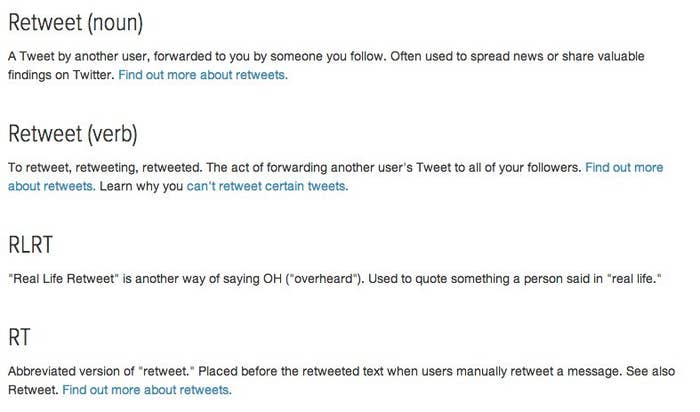
At its core, Twitter is an idiosyncratic service. Part of its charm — and popularity among core users — is its cryptic language, which is full of initialisms and user-created shorthand. Terms like "RT," "#FF," and "TL" are second nature to the platform's devoted users, but they're also part of the network's biggest problem: inaccessibility among new users.
So far, the site has tried to streamline the service through a series of smaller tweaks aimed at moving Twitter's opaque language into the background. Retweets were formalized, removing the manual "RT" structure. Tagging photos no longer requires placing an "@" before the user's name.
Today though, Twitter seems to be trying a new tactic by plainly translating its foreign language.
OH: "What does OH even mean?" The Twitter Glossary can help! Common terms and acronyms, explained: https://t.co/xvHXGGh41a
For devout users, the glossary will read like it was written by a robot that's trying to become sentient. The language can be clumsy and a few of the terms ("Email Notifications") feel so obvious that they border on parody. What's most interesting, though, is to see which user quirks made the cut and found their way into Twitter's official lexicon. "RLRT," or "real life retweet" made its way in while the oft-used "subtweet" is nowhere to be found.
While the glossary is first and foremost a translation and accessibility tool, it's also a wonderful snapshot of the peculiar service and, quite possibly, an effort to preserve the quirks that make it great.
